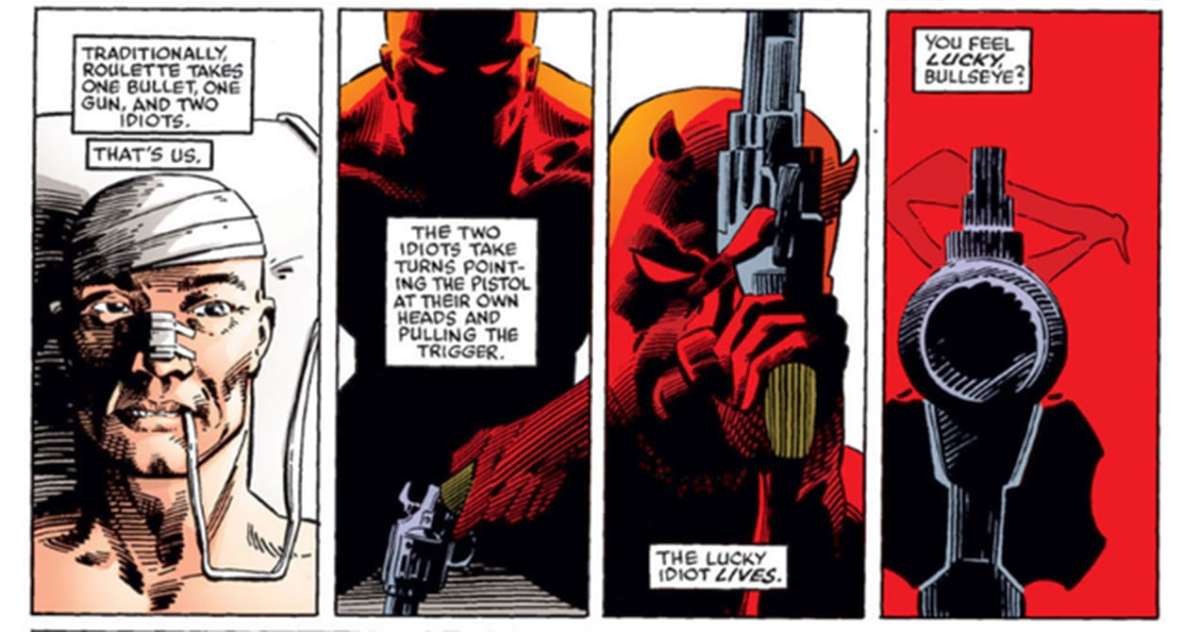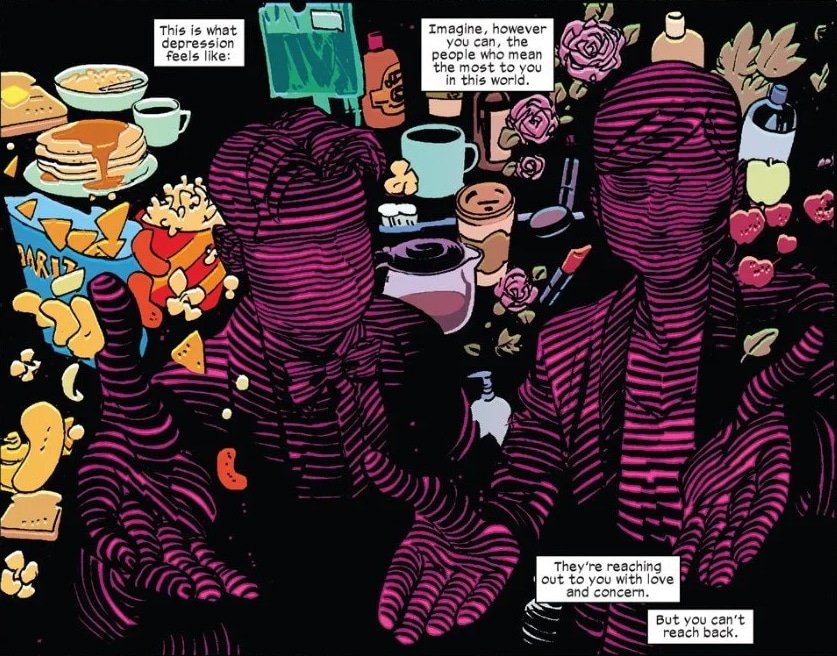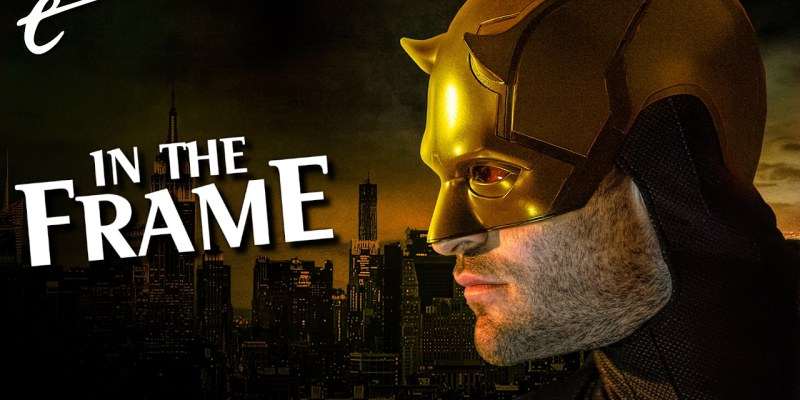She-Hulk is launching this week on Disney+. The series has attracted some attention because it includes a prominent supporting role for Charlie Cox as Matt Murdock. Following Cox’s cameo in Spider-Man: No Way Home, the show will effectively fold the Netflix hero into the larger continuity of the Marvel Cinematic Universe (MCU). Late last week, series creator and head writer Jessica Gao promised The Direct that audiences would “get to see a lighter side of that character.”
Gao suggested that the character’s appearance in She-Hulk would be brighter and more comedic than his appearances on Netflix. “What was so fun about bringing him and Daredevil into our world is that people have already seen a Daredevil who is very dramatic, little bit on the heavy side, very dark, brooding,” explained Gao. The implication seems to be that She-Hulk will feature a version of Daredevil that is less “dramatic” and less “on the heavy side.” There is something ominous in this.
To be fair, She-Hulk has been pitched as a comedy. There is certainly room for more tonal and formal variation within the MCU. It might be fun to have Marvel Studios produce a series that has as much fun mocking superhero archetypes as Garth Ennis’ Punisher run had playing with beloved characters like Spider-Man or Wolverine. It could be amusing for She-Hulk to treat a dark and brooding Daredevil the way that something like The Tick treated anti-hero Overkill (Scott Speiser).
However, despite all that marketing, it seems highly unlikely that She-Hulk will actually be that formally or tonally experimental. Gao has conceded as much. “It’s really threading a fine line between situational comedy — and there is a sitcom element as a lot of the writers come from the sitcom world — but still existing within the MCU,” she told SFX, admitting that “you also still have to feel like you’re within this universe.” The template can only bend so far.

In its own way, this is the root of the problem. Director Kat Coiro has talked about the way in which She-Hulk has plenty of “loose moments and improvisation” as if that marks a departure from the MCU template. In reality, the MCU has been built around looseness and improvisation since Iron Man. It’s part of the DNA of the shared universe, much to the chagrin of visual effects artists. What Gao and Coiro are saying about She-Hulk doesn’t seem so different from the tone of Black Widow.
It seems more than likely that the “lighter side” of Daredevil in She-Hulk will be similar to the lighter side of every other major MCU hero, similar to Steve Rogers (Chris Evans) appreciating “America’s Ass,” Hulk (Mark Ruffalo) trying to convince kids to take selfies with Ant-Man (Paul Rudd), or Thor (Chris Hemsworth) becoming a walking fat joke. It seems like Daredevil’s first major appearance in the MCU will consist of sanding down his rougher edges to make him like every other MCU hero.
After all, Daredevil is the second of the major Netflix characters to be ported over to the MCU, following Vincent D’Onofrio’s appearance as Wilson Fisk in the finale of Hawkeye. On Daredevil, Fisk was a tragic figure, a hulk of a man who would crush his business associates’ skulls in car doors and strangle the life out of other series regulars with his bare hands. In Hawkeye, he struggles to do anything more severe than toss an opponent around a toy store, like any other MCU villain.
There is an obvious problem with turning Daredevil into just another quippy superhero, even beyond the fact that the MCU is already overpopulated with such figures. It strips Daredevil of anything that makes him unique, anything that would allow the character to stand apart from any other major character in the shared universe. It’s an example of the crushing “sameness” of the MCU, which turns Shang-Chi (Simu Liu) from a martial arts hero to another dude shooting color-coded energy blasts.

To understand the issue here, it’s worth considering Daredevil’s history. The character was not created as a particularly dark and gritty superhero. Instead, he was constructed as an attempt to cash in on the popularity of Spider-Man. The very first issue of Daredevil from April 1964 features a prominent illustration of Spider-Man on the cover, with a headline boasting, “Remember when we introduced… Spider-Man? Now we continue the mighty Marvel tradition with… Daredevil!!”
It’s easy to see the parallels between the two characters in those early comics. Spider-Man swung through New York using webs, while Daredevil bounded between buildings using wires attached to his billy clubs. Spider-Man originally had a blonde girlfriend named Gwen Stacy, while Daredevil’s blonde love interest was named Karen Page. Both were defined by guilt over dead father figures. A redesign of Daredevil’s costume to make it completely red underscored the similarities.
Unsurprisingly, Daredevil struggled to catch on. If readers wanted to read comics about a hero like Spider-Man, there was a monthly Spider-Man comic on the stands. So the Daredevil book tried multiple gimmicks to find an audience, even moving the hero to San Francisco and sharing the title with Black Widow between July 1972 and January 1974. By 1977, the comic was selling so poorly that it was only shipping once every two months, edging towards cancellation.
The writers knew what the problem was. Daredevil lacked a unique angle. “I’m very hard pressed to find out how to make Spider-Man very different from Daredevil,” confessed Stan Lee in 1968. That unique angle would arrive with Frank Miller, who began as an artist on Daredevil in May 1979 but would take over plotting in January 1981. Miller brought a gritty urban sensibility to Daredevil that was unlike anything else Marvel was publishing.

Miller’s Daredevil was a shock to the system. Part of this was just genuine artistry, with Miller taking his cues from comics legend Will Eisner. Alan Moore praised Miller’s ability to “compose his stories with a musician’s sense of rhythm and meter.” However, part of it was Miller’s willingness to put his lead character and supporting cast through the wringer. Daredevil was often beaten and humiliated. The love of his life was brutally murdered. Miller’s run ends with Daredevil playing Russian Roulette.
Miller would go on to write the character’s defining story in Born Again, which is on a short list of the best Marvel comics ever published. He would also craft a defining origin for the hero in The Man Without Fear. Frank Miller was a huge influence on everything that followed. Netflix’s Daredevil drew heavily from Miller’s work, even just visually. Marvel Studios is keenly aware of this. The character’s new show is subtitled Born Again, but it seems unlikely to be a particularly faithful adaptation given the content of the story.
While Miller’s reputation has deteriorated in the decades since, he turned Daredevil into one of the most consistent books published by Marvel. In April 2003, Brian Michael Bendis and Alex Maleev won an Eisner for their work on the character. In July 2012, Mark Waid and his artistic collaborators won the same award for their own run. Although they didn’t win the award, other runs by teams like Ed Brubaker and Michael Lark or Chip Zdarsky and Marco Checchetto were also nominated.
These runs were built around torturing the title character. Bendis “outed” Daredevil, revealing his secret identity to the public, and then forced the superhero through a nervous breakdown. Brubaker opened his run with the character in prison, before breaking up his marriage and ending the run by having the character take control of a ninja death cult. Waid’s ostensibly brighter run was about the hero wrestling with depression. Zdarsky opened by having Daredevil accidentally kill somebody.

These are all stories that Marvel could never tell with a marquee figure like Spider-Man. Spider-Man is too popular and too iconic to be subjected to these deconstructions. The entire point and appeal of Daredevil as a superhero character is that he is perhaps the most high-profile superhero within the shared comic book continuity that can be used to explore and interrogate these themes. That’s what helped the character to become more than just a pale imitation of a more popular superhero.
To be clear, there are ways to integrate that character into a more comedic show like She-Hulk, but it requires a flexibility the MCU has rarely demonstrated. The animated Harley Quinn show has a great deal of fun allowing its dark and brooding Batman (Diedrich Bader) to serve as an absurd straight man to the rest of the show. Jason Momoa’s badass Aquaman could show up in the finale of Peacemaker, as a target of the title character’s (John Cena) ire. Comics do this all the time.
Allowing for Charlie Cox’s brief appearance in No Way Home, the character’s supporting role in She-Hulk is important in establishing what Marvel Studios wants to do with Daredevil. This is a statement of a purpose, the first significant use of the character since the rights reverted to Disney. It sets a tone for what will follow. It is disappointing that Marvel Studios seems anxious about letting Daredevil be Daredevil and is content to treat him just like all its other superheroes.
